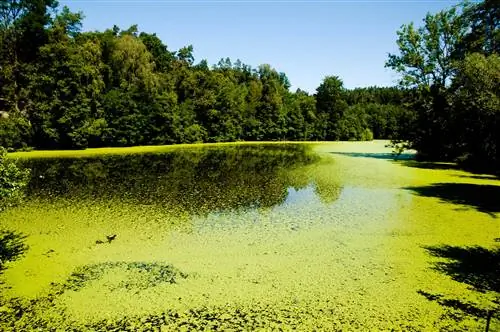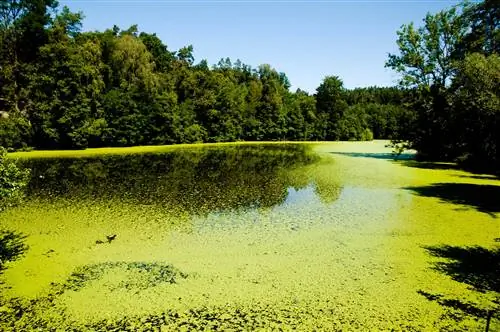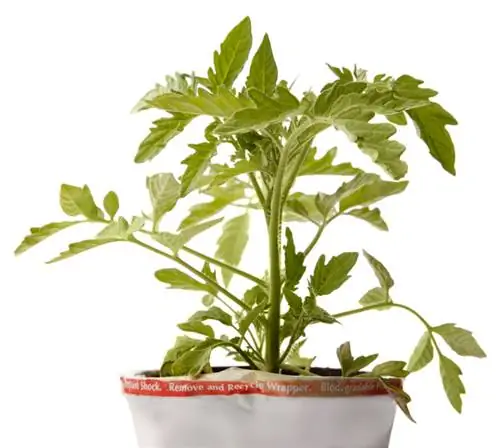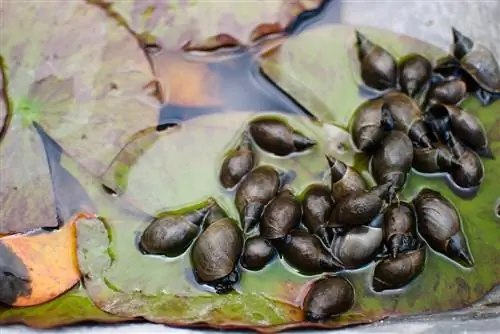- Author admin [email protected].
- Public 2023-12-25 17:45.
- Last modified 2025-01-23 11:22.
Algae seem to just appear on their own, sometimes they make bodies of water literally bloom. But where do these algae come from so unexpectedly and what makes them grow so quickly? You can find out all this and a few other facts in this article.

What do algae need to grow?
Algae are basically not very demanding. All they need to grow is enoughlight, air and water Using photosynthesis, they get all the nutrients they need to thrive. They also produce valuable oxygen for their environment.
What does algae live on?
In principle, algae live onlight, air and water They produce the sugar they need through photosynthesis. To do this, the algae need sunlight as an energy source. Other nutrients, such as phosphate or nitrate, are contained in the water. They arise, for example, when aquatic plants die or due to fish droppings in the water.
How does photosynthesis work?
The green plant pigment chlorophyll is essential for photosynthesis. It enables plants to obtain glucose (=sugar) from water and CO2 (=carbon dioxide) using light energy. This is a biochemical process, as the energy of the light/sun must first be converted into chemical energy. Oxygen is created as a waste product during photosynthesis, which the algae themselves do not need but release into their environment. In this way, algae “incidentally” ensure a good climate.
Are algae an aquatic plant?
No, algae arenot aquatic plants, they are not plants at all, they are just similar to them. The main similarity is that many types of algae contain chlorophyll and therefore have the ability to photosynthesize. However, algae are not a coherent group, but rather a collection of very different organisms. Microalgae are microscopically small, while macroalgae can grow to be many meters long.
Tip
Not an algae, but a bacterium
The feared and infamous blue-green algae is not an algae at all, but a bacterium (cyanobacterium, scientifically Cyanobacteria). It was probably classified as an algae because, like them, it is an aquatic organism and is capable of photosynthesis. Blue-green algae occur naturally in water and are harmless in normal concentrations. However, if blue-green algae multiply rapidly, their toxic excretions can cause diarrhea and vomiting in bathers.






